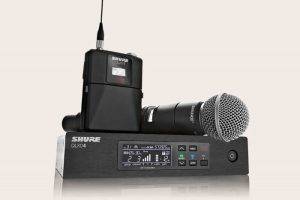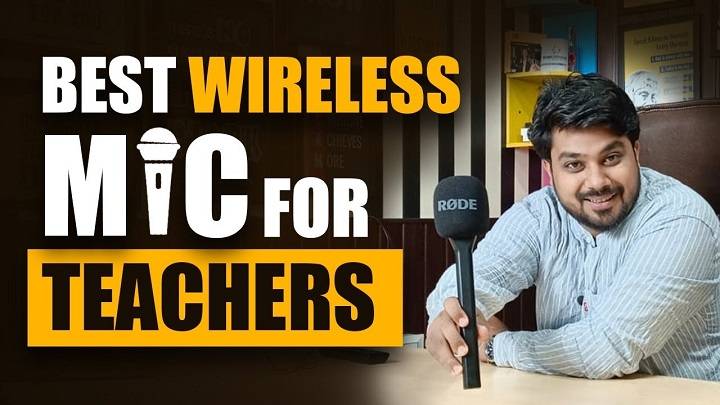Table of Contents
Teaching is a dynamic profession that requires effective communication and engagement with students. In today’s modern classrooms, technology plays a vital role in enhancing the learning experience. One such technological tool that has become increasingly popular among educators is the wireless microphone. In this comprehensive guide, we will explore the world of wireless microphones for teachers, examining their benefits, types, best practices, troubleshooting, and more. Whether you’re an experienced educator or new to the teaching profession, this guide will help you harness the power of wireless microphones to create an impactful and immersive learning environment.
The Power of Clear Communication
Clear and effective communication is at the heart of teaching. A teacher’s ability to convey information, engage students, and maintain their attention is crucial for successful learning outcomes. This is where wireless microphones come into play. They amplify the teacher’s voice, ensuring that every student in the classroom can hear and understand the lesson, regardless of their seating position.
Types of Wireless Microphones

Wireless microphones come in various types and configurations, each suited for specific teaching scenarios. In this chapter, we’ll explore the most common types of wireless microphones used by teachers:
- Handheld Microphones: These microphones are held in the teacher’s hand and offer great flexibility in movement. They are ideal for interactive lessons, Q&A sessions, and presentations.
- Lavalier Microphones: Lavalier microphones, also known as lapel microphones, are small and discreet. They can be clipped to the teacher’s clothing, allowing for hands-free movement while maintaining clear audio.
- Headset Microphones: Headset microphones are worn over the teacher’s head, positioning the microphone near the mouth. They provide excellent sound quality while allowing the teacher to move freely around the classroom.
- Clip-on Microphones: These microphones can be attached to the teacher’s collar or shirt, offering a balance between convenience and audio quality.
- Ceiling-Mounted Microphones: In some classrooms, ceiling-mounted microphones are used to capture the teacher’s voice. These microphones are less obtrusive and require minimal teacher interaction.
Benefits of Using Wireless Microphones
The adoption of wireless microphones in education brings a multitude of benefits for both teachers and students:
- Improved Audibility: Wireless microphones ensure that every student can hear the teacher clearly, reducing the likelihood of students missing important information.
- Enhanced Engagement: Teachers can move around the classroom, interact with students, and create a more dynamic and engaging learning environment.
- Voice Preservation: Teachers can speak at a normal volume, reducing vocal strain and fatigue, especially in larger classrooms.
- Inclusivity: Wireless microphones benefit students with hearing impairments, ensuring they have equal access to educational content.
- Recording and Documentation: Many wireless microphone systems allow for audio recording, which can be valuable for lesson review, documentation, and sharing with absent students.
Best Practices for Using Wireless Microphones

To maximize the benefits of wireless microphones in the classroom, it’s essential to follow best practices:
- Familiarize Yourself: Before using a wireless microphone, take the time to become familiar with its operation, including adjusting volume levels and changing frequencies if necessary.
- Check Battery Levels: Always ensure that the microphone’s battery is fully charged or has fresh batteries to avoid interruptions during lessons.
- Proper Placement: Position the microphone appropriately, whether it’s a handheld, lavalier, headset, or clip-on microphone, to ensure clear and consistent audio.
- Minimize Interference: Be aware of potential interference from other electronic devices in the classroom, and choose a microphone frequency that minimizes interference.
- Engage with Students: Use the freedom provided by wireless microphones to move around the classroom, engage with students, and create a more interactive learning experience.
Troubleshooting Common Issues
As with any technology, wireless microphones may encounter issues from time to time. This chapter will cover common problems and how to troubleshoot them:
- Audio Interference: If you experience audio interference or dropouts, check for nearby electronic devices that could be causing interference. Adjust the microphone’s frequency if necessary.
- Low Battery: If the microphone’s battery is running low, replace it with a fully charged battery or recharge it if the microphone is rechargeable.
- Audio Distortion: Distorted audio may result from the microphone being too close to the speaker’s mouth. Adjust the microphone’s placement to prevent clipping and distortion.
- Feedback: Feedback can occur when the microphone picks up its amplified sound from a nearby speaker. Lower the microphone’s volume or adjust its position to eliminate feedback.
- Connectivity Issues: Ensure that the microphone is correctly paired with its receiver or audio system. Re-sync the microphone if needed.
Choosing the Right Wireless Microphone System
Selecting the right wireless microphone system for your classroom is a crucial step toward enhancing your teaching capabilities. Here are some key factors to consider when choosing the best wireless microphone system to meet your needs:
- Microphone Type: Determine which microphone type suits your teaching style and classroom setup. For interactive teaching with movement, consider handheld or headset microphones. Lavalier microphones are discreet and ideal for maintaining a professional appearance. Clip-on microphones offer a balance between convenience and audio quality.
- Range: Assess the size of your classroom and the distance you plan to move while teaching. Ensure that the wireless microphone system has an adequate range to cover the entire classroom without signal dropouts.
- Battery Life: Check the microphone’s battery life to ensure it can last throughout your teaching sessions. Some systems offer long-lasting batteries or rechargeable options, reducing the need for frequent battery changes.
- Compatibility: Ensure that the chosen wireless microphone system is compatible with your existing audio equipment, such as classroom amplifiers, audiovisual systems, and recording devices. Compatibility can save you time and effort in setting up and integrating the microphone.
- Frequency Range: Understand the frequency range of the wireless microphone system and select a frequency that minimizes interference with other electronic devices in your classroom. This will help maintain clear audio quality.
- Durability: Consider the build quality of the microphone and receiver, especially if you plan to use them daily in a classroom environment. Robust and durable equipment can withstand wear and tear.
- Price: Set a budget for your wireless microphone system and explore options within that range. While cost-effective solutions are available, investing in a reliable system can ensure long-term satisfaction.
- Warranty and Support: Research the manufacturer’s warranty and the availability of customer support. A warranty can provide peace of mind, and responsive customer support can assist with any technical issues that may arise.
By carefully considering these factors, you can choose a wireless microphone system that aligns with your teaching requirements and enhances your ability to engage with students effectively.
Integration with Classroom Technology
Wireless microphones can seamlessly integrate with various classroom technologies, amplifying their effectiveness and improving the overall learning experience. Here’s how you can integrate wireless microphones with common classroom technology:
- Audiovisual Systems: Connect the wireless microphone receiver to the classroom’s audiovisual system, allowing your voice to be projected through the room’s speakers. This integration ensures that students can hear you clearly during multimedia presentations.
- Projectors: Many classrooms use projectors for visual aids. A wireless microphone can be connected to the projector’s audio input, enhancing your voice’s audio quality when giving presentations or explanations.
- Interactive Whiteboards: If your classroom features an interactive whiteboard, pair your wireless microphone with the classroom’s audio system to ensure that students can hear your instructions and explanations while engaging with the whiteboard content.
- Recording Devices: Some wireless microphone systems offer recording capabilities. Utilize this feature to capture your lessons for later review, sharing with absent students, or creating supplementary study materials.
- Classroom Amplifiers: Many classrooms are equipped with amplification systems. Integrating your wireless microphone with the amplifier ensures consistent and clear audio amplification throughout the room.
- Video Conferencing: In today’s digital age, video conferencing is increasingly relevant for remote or hybrid teaching. Wireless microphones enhance your voice’s clarity during virtual lessons, making it easier for remote students to follow along.
By integrating your wireless microphone with these classroom technologies, you can create a more immersive and interactive learning environment. It ensures that every student, whether in the classroom or joining remotely, can benefit from improved audio quality and engagement.
Student Feedback and Learning Outcomes
The implementation of wireless microphones in the classroom can have a positive impact on student feedback and learning outcomes. Here’s how improved audibility and engagement can lead to higher student satisfaction and better academic performance:
- Enhanced Audibility: With wireless microphones, every student can hear your instructions, explanations, and responses to questions, regardless of where they are seated. This ensures that all students have equal access to the educational content, reducing the likelihood of missed information.
- Increased Engagement: Clear and audible communication captivates students’ attention, fostering active participation and engagement. Students are more likely to ask questions, contribute to discussions, and remain focused during lessons.
- Improved Comprehension: When students can hear you clearly, they can better understand the subject matter. This leads to improved comprehension, retention of information, and overall academic performance.
- Inclusivity: Wireless microphones benefit students with hearing impairments by providing enhanced audio clarity. Inclusive teaching practices can lead to a more diverse and equitable learning environment.
- Student Satisfaction: Students appreciate instructors who invest in technologies that enhance their learning experience. Positive feedback from students regarding audio quality and engagement can contribute to higher overall satisfaction with your teaching.
- Learning Outcomes: The combination of clear communication and increased engagement can lead to improved learning outcomes. Students are more likely to achieve their academic goals when they have access to effective teaching methods and technologies.
Incorporating wireless microphones into your teaching toolkit can create a positive feedback loop, where enhanced audibility and engagement contribute to improved learning outcomes. By prioritizing the student experience and using technology to support their educational journey, you can empower your students to succeed academically.
Related Post:
Audio Mono y Estéreo: A Comprehensive Guide
Unlocking the Power of Wireless Microphones for PCs: A Comprehensive Guide
Shotgun Mic for iPhone: A Comprehensive Guide
As you embark on your journey with wireless microphones in the classroom, remember that effective communication is key to successful teaching. Embrace this technology, adapt it to your teaching style, and watch as it transforms your classroom into a place of enhanced learning and interaction. Happy teaching!

